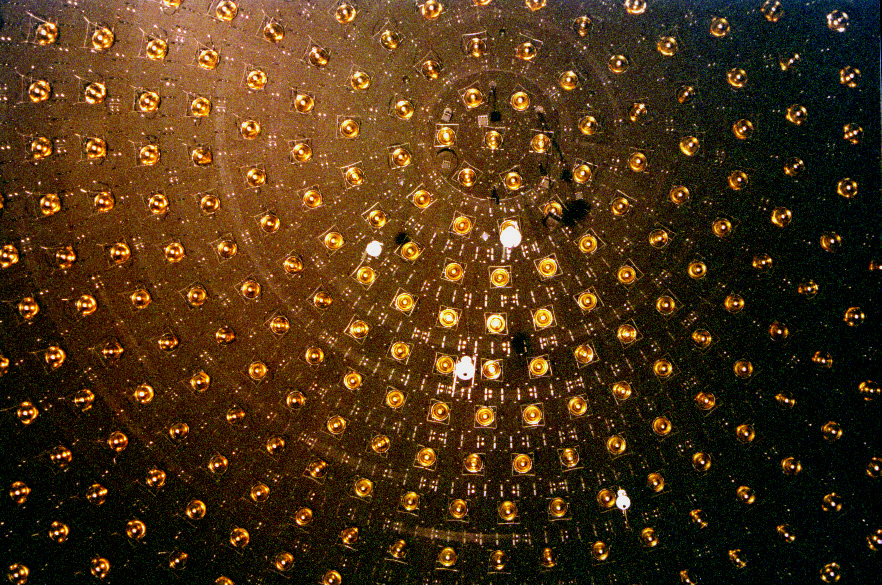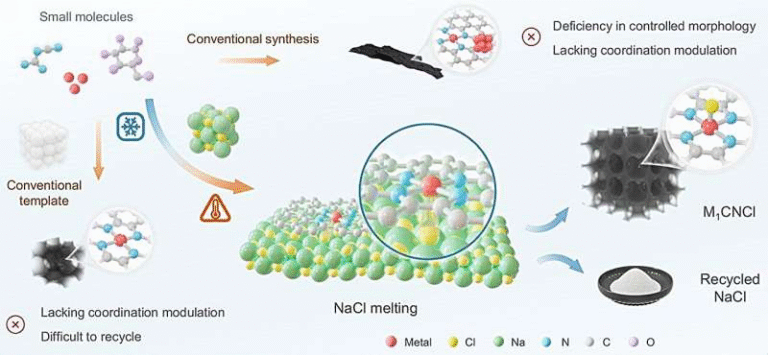Scientists Propose Turning Massive Neutrino Detectors Into Giant Natural Particle Colliders

For decades, particle physicists have been obsessed with pushing the limits of energy in their experiments.
The more energy a particle collider can produce, the deeper scientists can peer into the structure of matter and the forces that govern it. But there’s a problem—on Earth, there’s only so much space, money, and engineering power available to keep building larger colliders. The Large Hadron Collider (LHC) at CERN already stretches 27 kilometers underground, and even with proposed successors like the Future Circular Collider (FCC) or CEPC, we’re still years away from building something that can smash particles together at significantly higher energies.
Now, a team of researchers led by Yang Bai from the University of Wisconsin has proposed a fascinating alternative: instead of building new colliders, why not use the universe itself as the source of ultra-high-energy collisions? Their idea, published on the arXiv preprint server, suggests that existing neutrino detectors—massive instruments buried deep under ice or water—could function as giant particle colliders, capable of probing energies far beyond what man-made accelerators can achieve.
The Concept: Turning Neutrino Detectors Into Colliders
The proposal is built around a simple but brilliant concept. Neutrinos, those ghostly subatomic particles that barely interact with matter, are constantly bombarding Earth. Trillions pass through your body every second, without leaving a trace. But every once in a while, one of them collides with a proton or an electron, producing a burst of secondary particles that emit Cherenkov radiation—a faint blue glow that signals a high-speed interaction.
Neutrino detectors like IceCube in Antarctica, KM3NeT in the Mediterranean Sea, and Baikal-GVD in Lake Baikal are designed to capture these rare flashes of light. They consist of enormous volumes of transparent material—ice or water—surrounded by sensitive light detectors. These instruments were built primarily for studying neutrinos from cosmic sources like exploding stars or black holes, but Bai and his colleagues realized they could do something more: treat those neutrino interactions as collisions between particles, similar to what happens in the LHC.
They call this concept the Large Neutrino Collider (LνC).
How It Works: Nature’s High-Energy Beams
When a high-energy cosmic neutrino—with energy in the range of tens or hundreds of peta-electronvolts (PeV)—slams into a nucleon in one of these detectors, it creates a particle collision with an enormous center-of-mass energy (√s). The energy of such a natural collision can reach up to 220 PeV, which is almost 16,000 times greater than the LHC’s 14-teraelectronvolt (TeV) maximum.
That kind of energy is enough to explore completely new physical territory, possibly revealing particles beyond the Standard Model (BSM)—the theoretical framework that describes all known fundamental particles. Bai’s team argues that these collisions could help scientists search for exotic particles like leptogluons, which are hypothetical particles that share properties of both gluons (which bind quarks inside protons) and leptons (like electrons or neutrinos). Leptogluons are a feature of certain “composite” models that suggest leptons and gluons might actually be made of the same underlying substance.
In addition to leptogluons, the researchers examined the potential to detect leptoquarks, heavy vector bosons, and other composite particles predicted by extensions of the Standard Model. The surprising conclusion: for some of these particles, the LνC could outperform the LHC or even its high-luminosity upgrades.
Track and Shower Events: How Detection Works
Inside neutrino detectors, scientists categorize interactions into two main types: tracks and showers.
- Track events happen when a neutrino collides and produces a muon, which leaves a clear, linear trail of light through the detector. These tracks are relatively easy to analyze because they provide directional and energy information about the original neutrino.
- Shower events, on the other hand, occur when a neutrino produces a burst of many particles in a small area, creating a spherical flash of light. These are harder to interpret but still useful for identifying high-energy interactions.
The new study focuses mainly on track events, since they can be more easily associated with specific types of particle interactions, allowing for better analysis of potential new physics.
How the LνC Compares to the LHC
While the Large Neutrino Collider idea sounds revolutionary, it comes with some major caveats.
The LHC accelerates beams of protons and makes them collide at extremely high rates—billions of times per second. In contrast, the LνC would rely on naturally occurring cosmic neutrinos, which are incredibly rare. The “luminosity,” or total number of collisions per unit time, would be much lower—by many orders of magnitude. Even with massive detectors spanning several cubic kilometers and running for years, the number of usable events would remain small compared to a collider like the LHC.
That said, the energy of each event in a neutrino detector could be vastly higher. While the LHC pushes technological limits to reach 14 TeV, a cosmic neutrino colliding with a nucleon could reach hundreds of PeV—far beyond what current technology can reproduce. In particle physics, energy is everything, because it allows scientists to probe shorter distances and heavier particles.
In Bai’s analysis, the LνC could exceed the LHC’s capabilities in detecting certain heavy or composite particles, such as leptogluons or contact interactions that involve new types of forces. However, for others—like new heavy vector bosons—the LνC would only be comparable to or weaker than the LHC’s reach.
Future Detectors and Upgrades
The idea of the LνC gains more strength when considering upcoming projects. Detectors like JUNO (in Jiangmen, China) and proposed next-generation facilities with detection volumes of tens of cubic kilometers could increase the odds of capturing ultra-high-energy neutrino events.
Researchers also suggest adding new types of sensors and particle-tracking systems to these detectors. Currently, neutrino observatories mainly rely on light detection (Cherenkov photons). By introducing additional particle detection layers, scientists could collect more detailed data about the particles produced in each interaction, turning these observatories into multi-purpose physics laboratories.
However, Bai’s team acknowledges that this is still a conceptual proposal. There are many technical hurdles—such as event reconstruction, background noise, and the sheer unpredictability of cosmic neutrino fluxes—that would need to be solved before such a system could operate as a practical collider.
Why This Matters: Beyond the Standard Model
The Standard Model of particle physics has been remarkably successful in explaining how subatomic particles interact. Yet it doesn’t account for everything—dark matter, dark energy, and gravity remain outside its reach. To explore those mysteries, scientists need to look for new particles or forces that the Standard Model doesn’t predict.
High-energy experiments like the LHC have discovered particles such as the Higgs boson, but they haven’t yet found clear evidence of anything beyond the Standard Model. That’s why researchers are so eager to reach higher energies: new physics often hides where our current instruments can’t yet see.
The LνC idea provides a clever shortcut. By using natural high-energy neutrinos, we might explore uncharted energy scales without needing to build a multi-trillion-dollar accelerator. If successful, neutrino detectors could double as cosmic microscopes, revealing the structure of matter at levels never before probed.
A New Frontier in Particle Physics
This proposal is part of a larger movement in physics to rethink how we explore fundamental particles. Instead of focusing only on building bigger machines, scientists are learning to reuse existing instruments in creative ways. Neutrino detectors are already massive, sensitive, and located in ideal environments—deep under ice, ocean, or rock—to minimize interference.
If future experiments confirm that they can also function as colliders, it could revolutionize how we study high-energy physics, giving researchers access to phenomena far beyond the reach of current colliders. It’s a vision of turning the entire planet into a laboratory—where the cosmos supplies the beam, and our detectors simply wait for the collisions to happen.
While the Large Neutrino Collider is still a theoretical concept, it captures the spirit of modern physics: combining ingenuity with practicality, and using what we already have to push the boundaries of what we know.
Research Paper: Large Neutrino “Collider” – Yang Bai, Keping Xie, Bei Zhou (arXiv:2510.13948, 2025)





